Digital Doc Iris HD Camera Setup Guide
This guide describes the installation and setup of the Digital Doc IRIS HD intraoral camera for use with Dentrix Ascend Imaging.
Last updated: 10/31/2025
Overview
Dentrix Ascend Imaging supports the acquisition of intraoral images from the Digital Doc IRIS HD camera on a computer running the Windows operating system.
Notes:
-
Prior to the installation of the camera, the acquisition agent application must be installed on each computer that will acquire images. Refer to Setting up the acquisition agent for instructions on downloading and installing the acquisition agent.
-
The Digital Doc Iris HD camera will only work properly via direct integration with a 32-bit installation of Google Chrome. If you cannot use 32-bit Chrome, it is recommended that you install the TWAIN drivers instead of the drivers for direct integration.
-
The Digital Doc Iris HD camera will work properly only if it is plugged in before Google Chrome is opened. If you encounter a "Video Device Not Found" error, or if the camera is unable to be selected in Chrome, just close and re-open Chrome with the device connected.
-
The Digital Doc Iris HD Intraoral Camera will work properly only if it is plugged into a USB 3.0 port. If the camera is connected to a USB 2.0 port, the images will appear scrambled and therefore be unusable.
Required Setup for Digital Doc Iris HD Intraoral Camera:
Drivers for the Digital Doc IRIS HD camera must be installed on each computer that the camera will be plugged into.
To install the drivers, do the following:
-
Insert the driver disk included with your device.
Note: If you did not receive a driver disk with your device, contact Digital Doc customer support for the latest driver installer. As of writing this guide, the latest driver installer is Setup_Iris_HD_3.4.181015.exe.
-
Launch the installation application.
-
If a User Account Control window opens, click Yes.
The Setup starts, and the License Agreement screen appears.
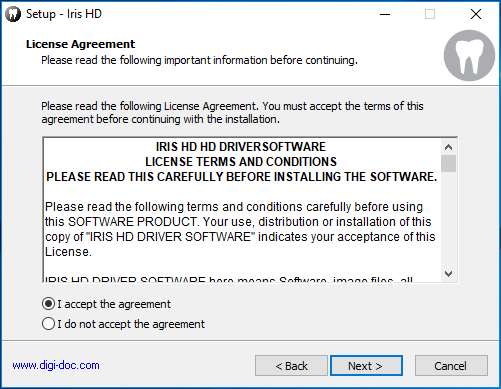
-
Select the I accept the agreement option, and then click Next.
The Select Destination Location screen appears.
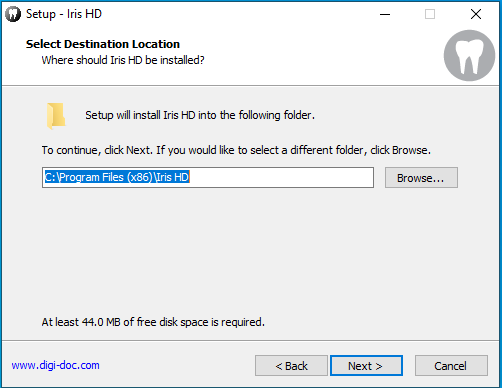
-
Select the desired installation directory, and then click Next.
-
If a message appears and asks if you want to create a folder, click Yes.
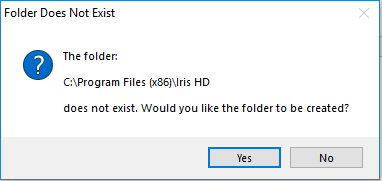
The Select Start Menu Folder screen appears.

-
It is recommended that you leave the default name (Digital Doc) entered. Click Next.
The Ready to Install screen appears.
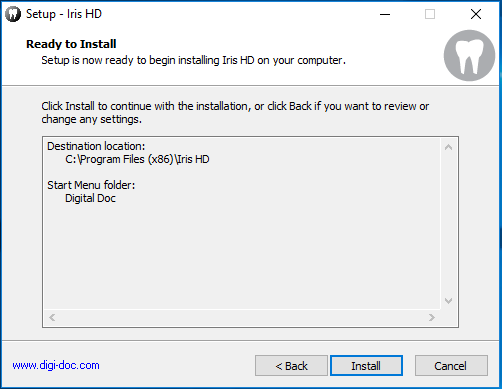
-
Click Install.
-
If a Windows Security dialog box appears, click Install.
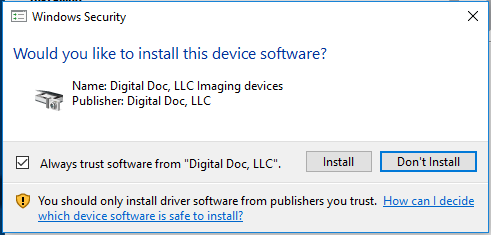
The Iris HD Install Assistant dialog box appears.
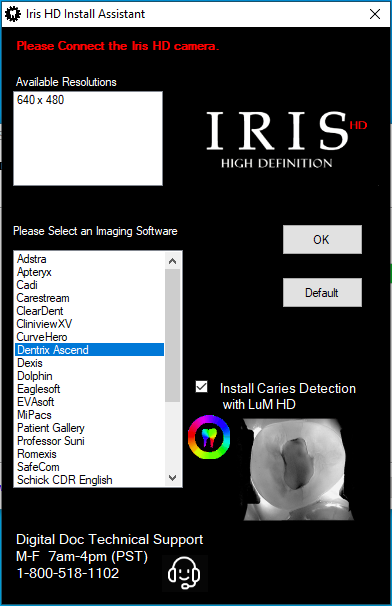
-
From the Please Select an Imaging Software list, select Dentrix Ascend. Then, click OK.
The Completing the Iris HD Setup Wizard screen appears.
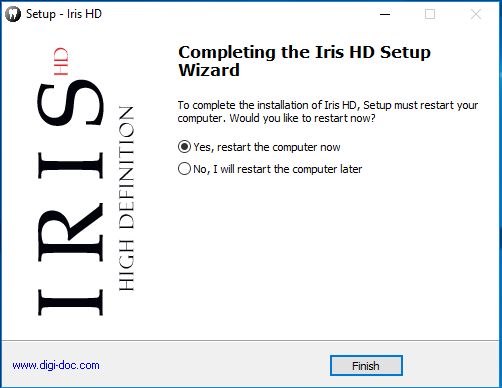
-
Click Finish.
Testing
The Digital Doc Iris HD camera is now functional in Dentrix Ascend Imaging. To acquire a test image, do the following:
-
Select the 2D Oral/Facial Photo Images imaging procedure.
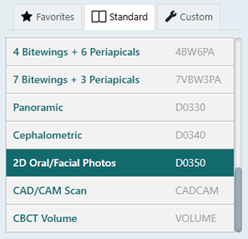
-
On the Available Devices menu, select Digital Doc Iris / Iris HD.
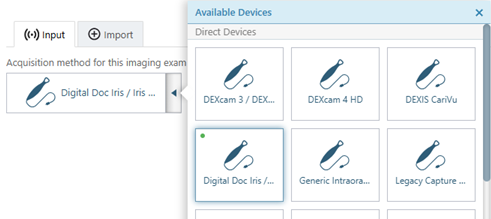
-
Click Start.

Notes:
-
If a message about the browser not being able to access the camera appears, refer to the steps in the "Troubleshooting" section of this guide.
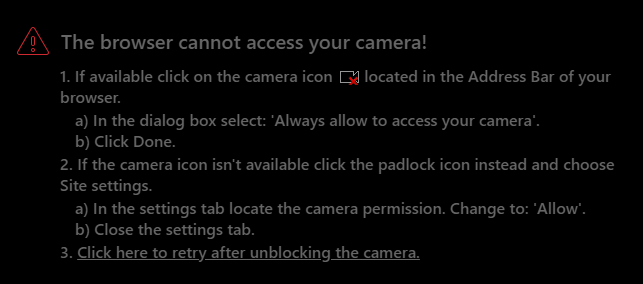
-
To access basic camera settings, click the cog icon (in the upper-right corner of the snapshot panel).

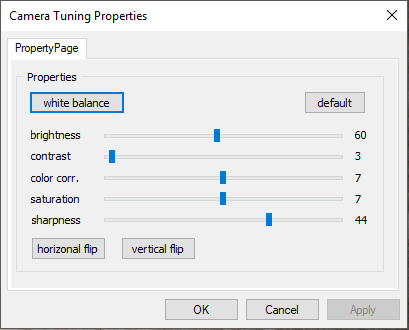
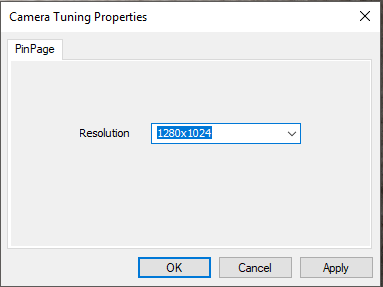
-
-
If there is more than one camera connected to the computer, or if the computer has a built-in webcam, Google Chrome may not select the intraoral camera by default. If this happens, to select the correct camera, do the following:
-
Click the camera icon (in the upper-right corner of the snapshot panel).

-
Select the option that corresponds to the correct camera, and then click Change Source.
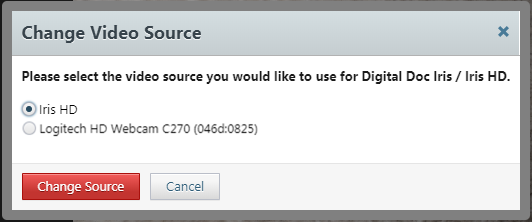
Note: You may need to be restart the browser for the changes to take effect.
After you have configured the camera and started an acquisition, a live video stream from your camera appears.

-
-
With the camera properly positioned, use the button on your camera to pause or freeze the live video stream (or click Pause Streaming).

-
Use the button on your camera to capture the current video frame (or click Take a snapshot). The resulting image is added to the snapshot panel, and the video stream automatically becomes live again.

-
Repeat steps 5-6 as needed to acquire additional snapshots.
-
On the snapshot panel, clear the check box of the snapshots that you do not want to save.

-
Click Assign Images.
-
Do any of the following:
-
To save one or more snapshots as intraoral images and assign tooth numbers, select the snapshots that pertain to the same teeth (deselect snapshots that do not pertain to the same teeth), and then drag them to the Select Teeth, UR/UL/LR/LL, Upper Jaw, or Lower Jaw box.

If you drag snapshots to the Select Teeth box, select the applicable teeth, and then click Assign Teeth.

-
To save one or more snapshots as extraoral images, select the snapshots that are extraoral images (deselect snapshots that are not extraoral images), and then drag them to the Extraoral Photos box.

-
To save the snapshots on the snapshot panel as intraoral images, but not assign tooth numbers, leave those snapshots on the snapshot panel.
Assigned intraoral images appear on the left side of the preview area; extraoral on the right.

Note: If you have a mix of intraoral and extraoral images, they map to one procedure (D0350), which will appear in the progress notes with two icons. Also, you can delete or reassign the intraoral or extraoral exam as needed in the future.
-
-
Click Begin Uploading.
Troubleshooting
Camera Device Drivers
To confirm that the camera device driver is loaded and recognized by Windows, do the following:
-
Plug the camera into a USB 3.0 port.
-
Open Device Manager.
-
Expand the Imaging Devices category, and make sure that the camera is listed ("Digital Doc IRIS HD x64").

-
If your camera is not being detected by Windows, or if it appears with an error message, try unplugging the camera and plugging it into another USB port on the computer. Also, you can try uninstalling and then reinstalling the drivers. If the problem persists, contact the camera manufacturer for additional assistance.
Note: If the drivers for the non-HD version of the Digital Doc Iris camera were installed on the computer previously, you have installed the Digital Doc Iris HD drivers, and you encounter a "Video Device Not Found" error when you try to acquire images, uninstall the Digital Doc Iris drivers, and make sure that you are using a 32-bit installation of Google Chrome. If the issue persists, a reset of the computer may be required.
Blocked Camera
If the browser cannot access the camera, an error message appears in Dentrix Ascend Imaging.

To unblock the camera, do the following:
-
In Chrome, click the View site information button on the left side of the URL box.

-
Select Site settings.

-
Change the Camera setting from Ask to Allow.

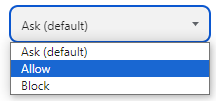
-
On the error message in Dentrix Ascend Imaging, click the Click here to retry after unblocking the camera link.
